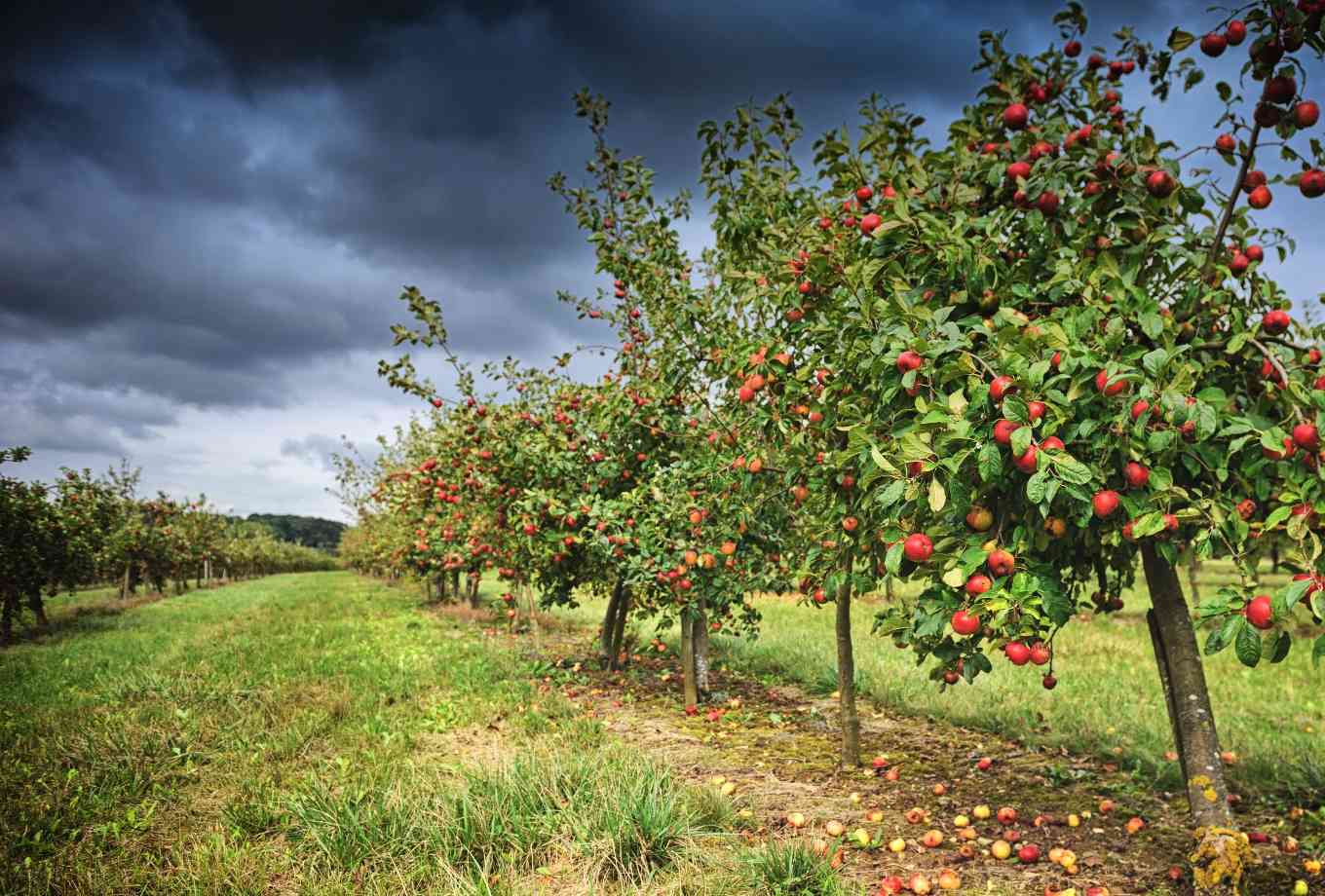Pruning an apple tree is essential for its health, growth, and fruit production. Proper pruning helps remove dead or diseased wood, shape the tree, and improve sunlight penetration and air circulation within the canopy. Here’s a step-by-step guide on how to prune an apple tree:
- Timing: The best time to prune an apple tree is during its dormant period, typically in late winter or early spring before new growth begins. Pruning during this time minimizes stress on the tree and reduces the risk of disease transmission.
- Tools: Gather the necessary tools, including sharp pruning shears, loppers, a pruning saw, and safety equipment like gloves and protective eyewear.
- Remove Dead and Diseased Wood: Start by inspecting the tree for dead, damaged, or diseased branches. Cut these branches back to their origin point or to a healthy lateral branch using the pruning shears or loppers.
- Thin Out Crowded Growth: Look for branches that are crossing or rubbing against each other. Select one of the competing branches to keep, and remove the others. This opens up the canopy and reduces the risk of disease and pests.
- Prune for Shape: Apple trees benefit from an open center shape (also known as a vase shape). Remove the central leader (main vertical stem) to encourage outward growth and more light penetration. Keep several well-spaced lateral branches to form the main structure of the tree.
- Manage Height: If your apple tree has grown too tall, you can reduce its height by cutting back the top branches. However, avoid cutting off more than one-third of the tree’s total height in a single pruning session to avoid stressing the tree.
- Cut at the Right Angle: Make clean cuts at a slight angle and avoid leaving stubs. Cutting at a slight angle (about 45 degrees) allows water to run off and reduces the risk of water pooling on the cut surface.
- Prune Suckers and Water Sprouts: Remove any suckers (shoots growing from the base of the tree) and water sprouts (upright shoots growing from branches) as they take away energy from the tree and don’t contribute to fruit production.
- Fruiting Spurs: Apple trees produce fruit on spurs (short, stubby branches). Avoid cutting these off during pruning, as they are essential for future fruiting.
- Clean Up: Collect and dispose of all pruned branches properly. Dispose of them as recommended in your local area.
Remember that each apple tree is different, so it’s essential to tailor your pruning approach to the tree’s specific needs. If you are unsure or have a very large or mature apple tree, consider seeking advice from a professional arborist or a local horticulturist. Proper pruning will help your apple tree thrive and produce healthy, delicious fruit.
How to prune a pear tree:



